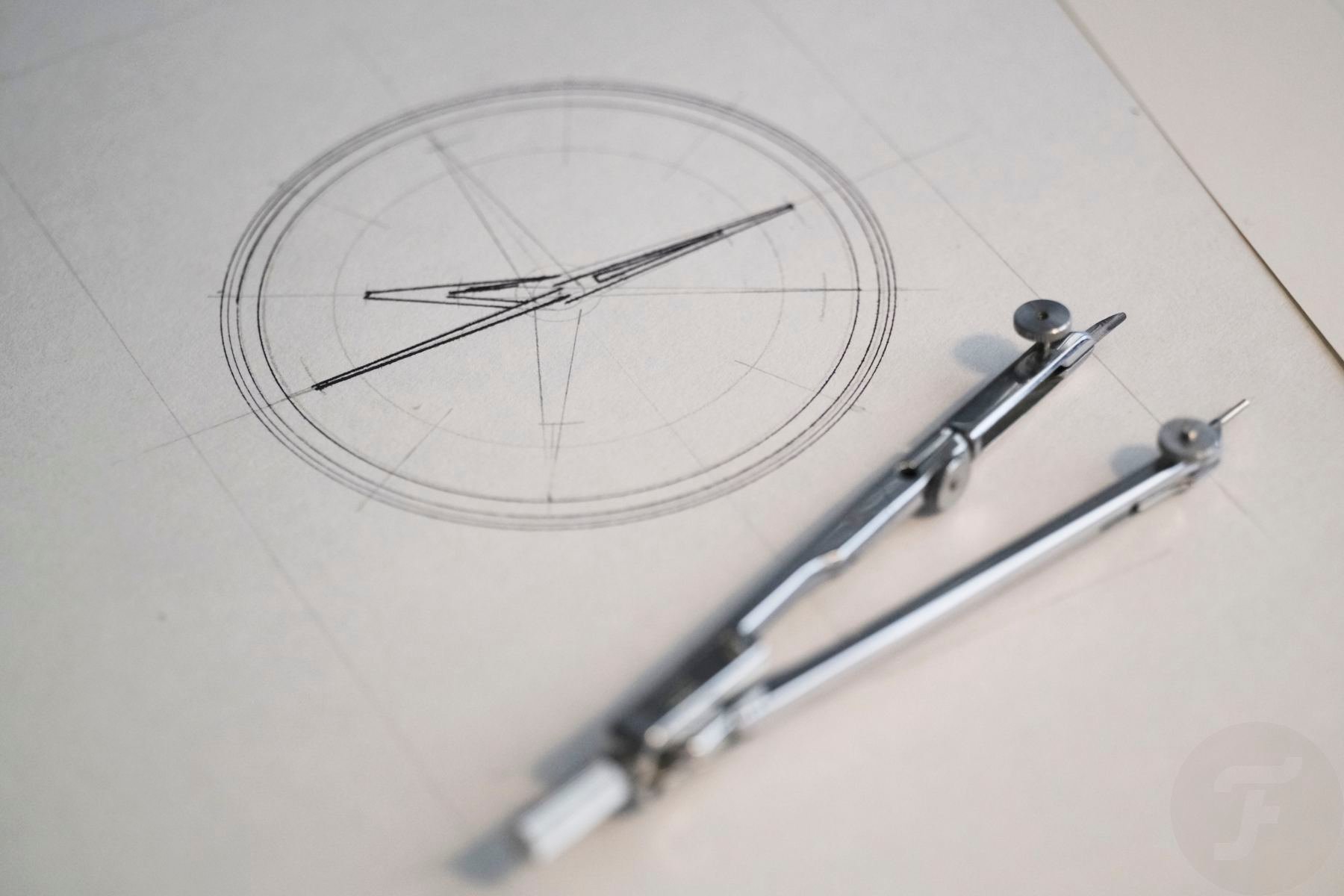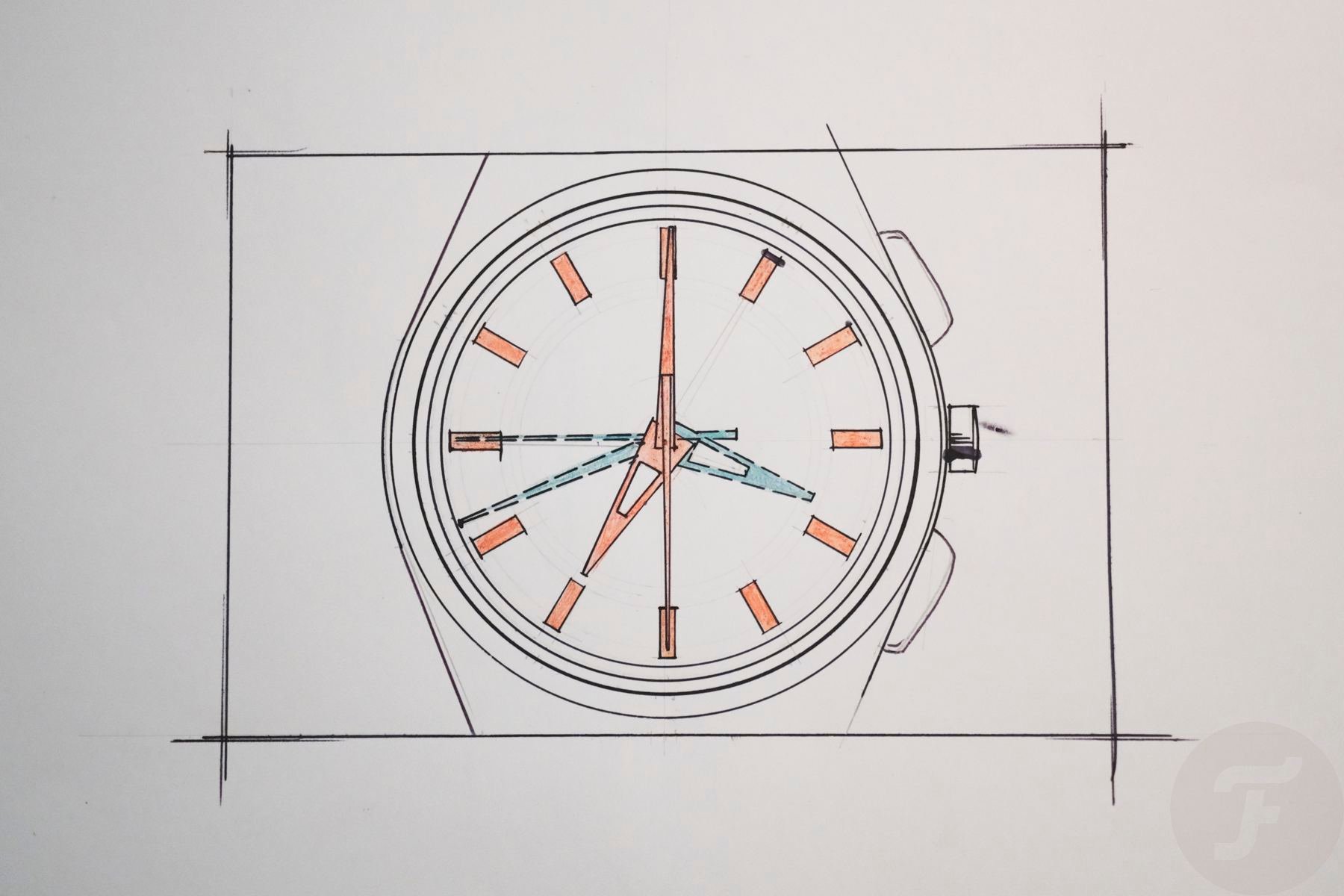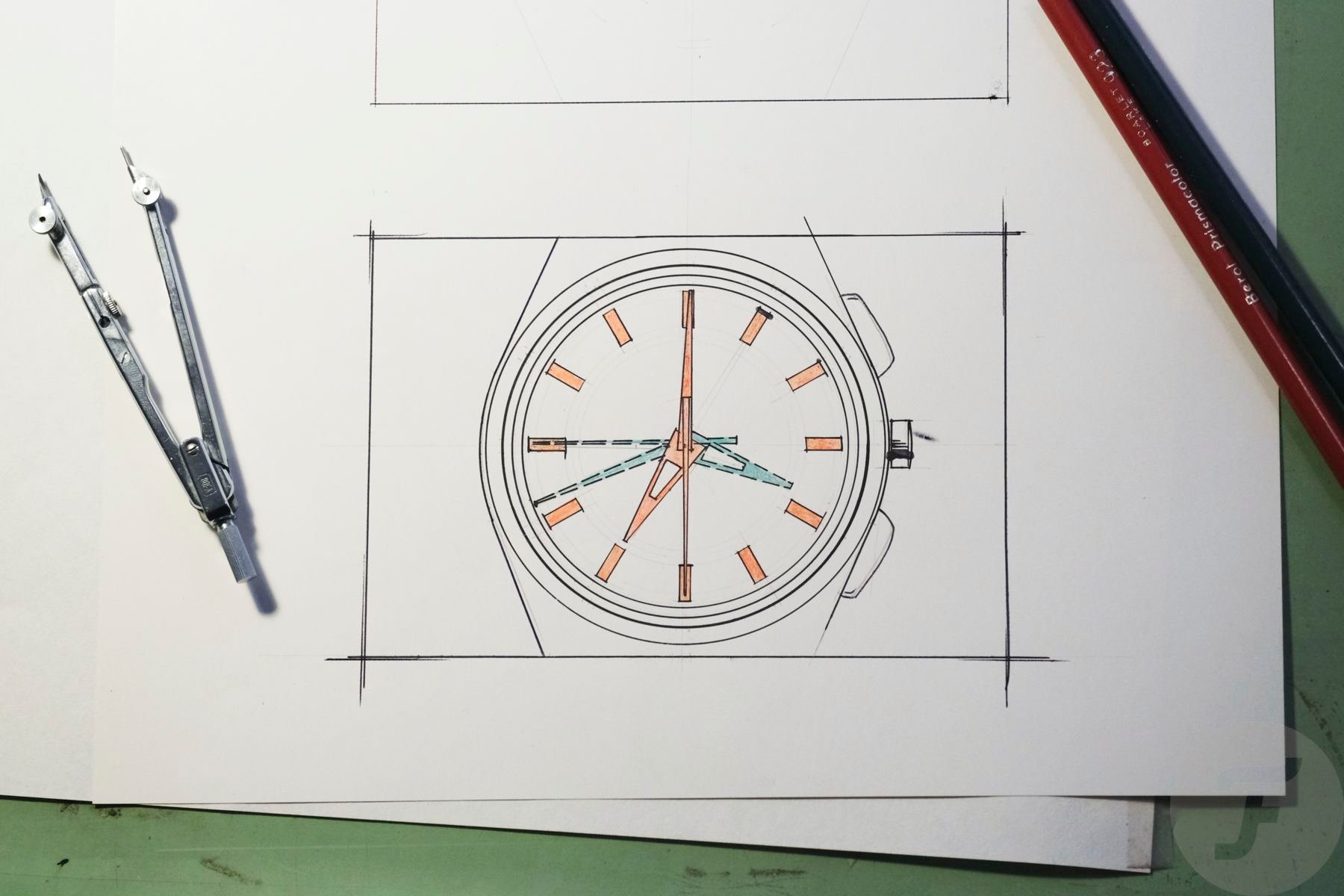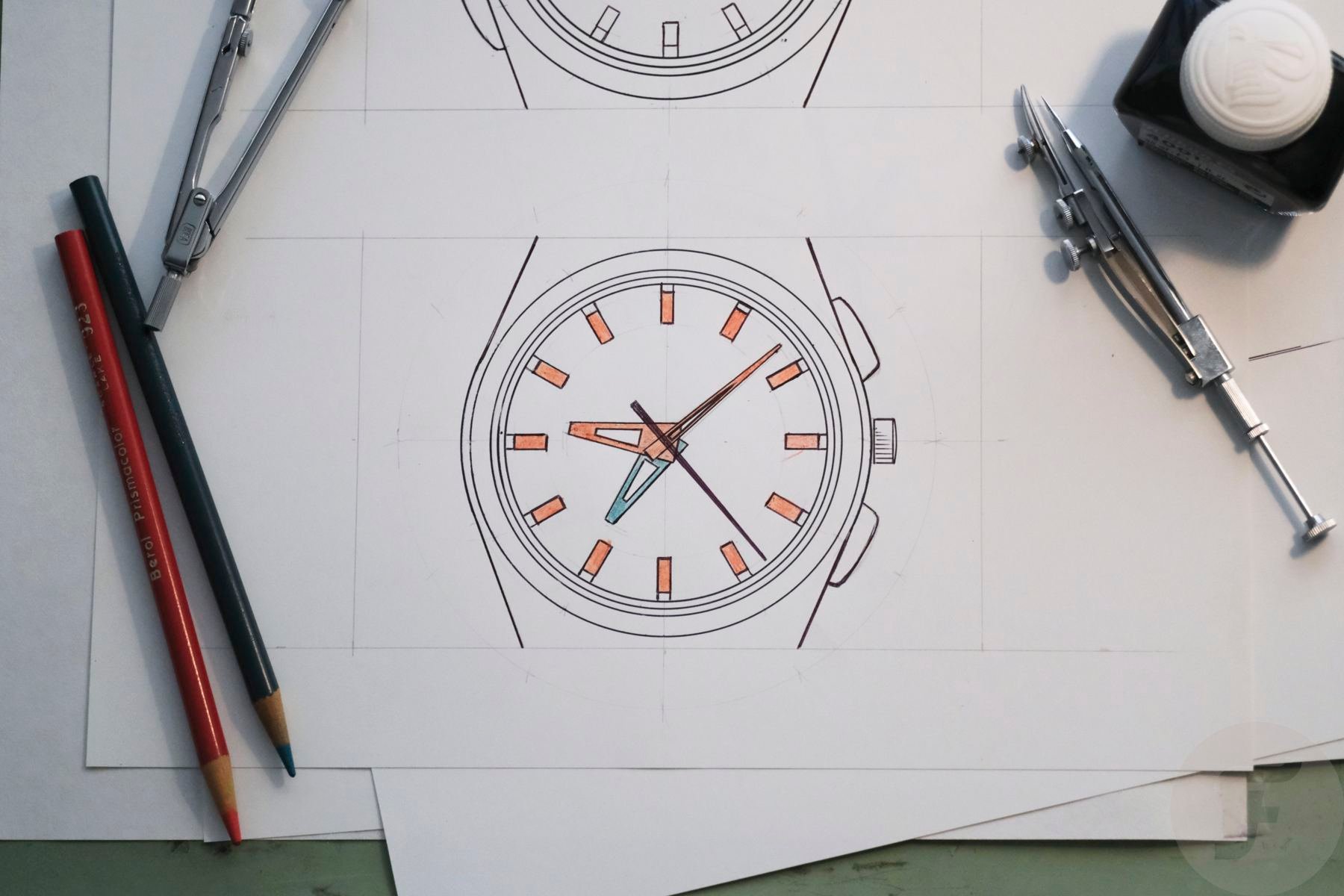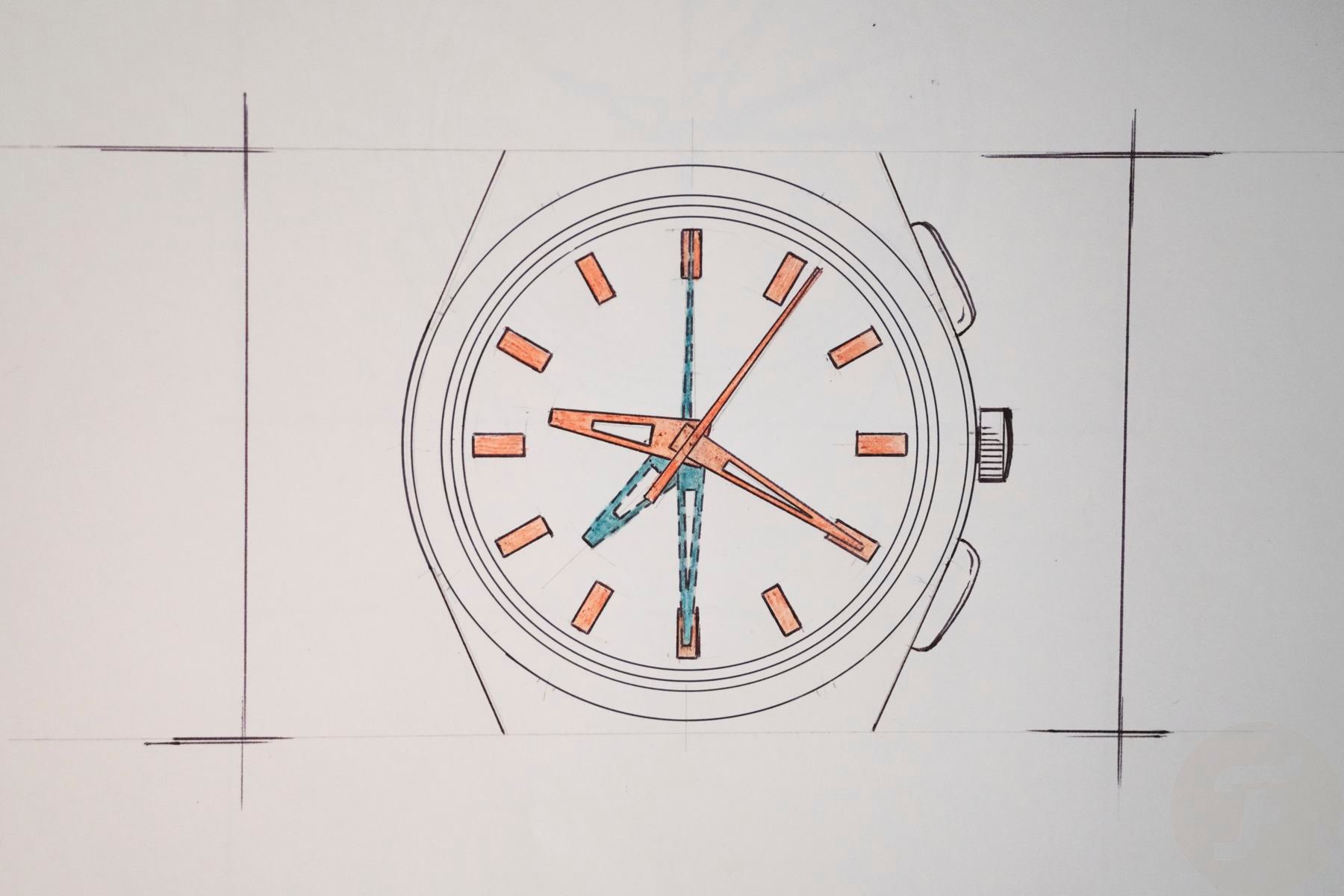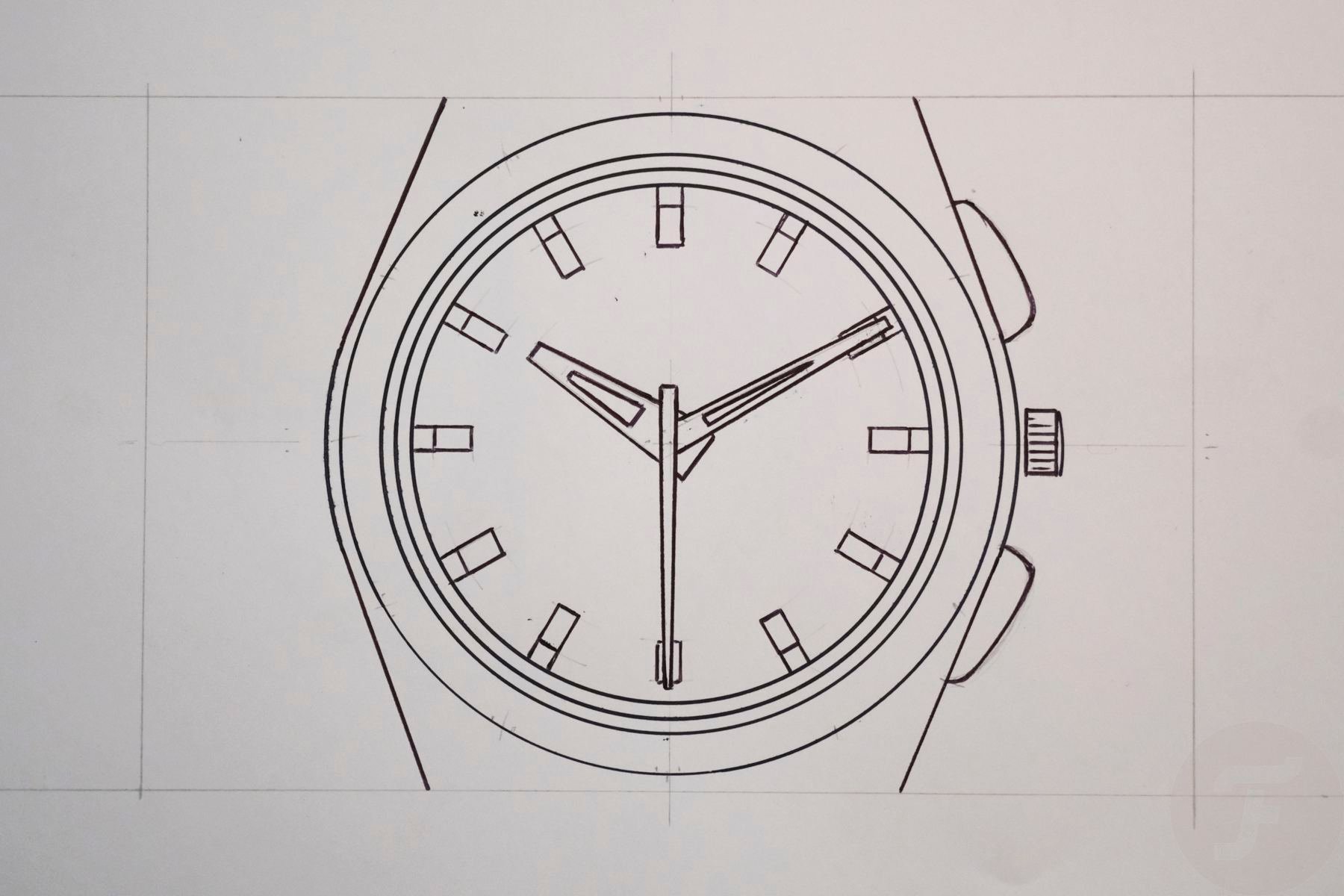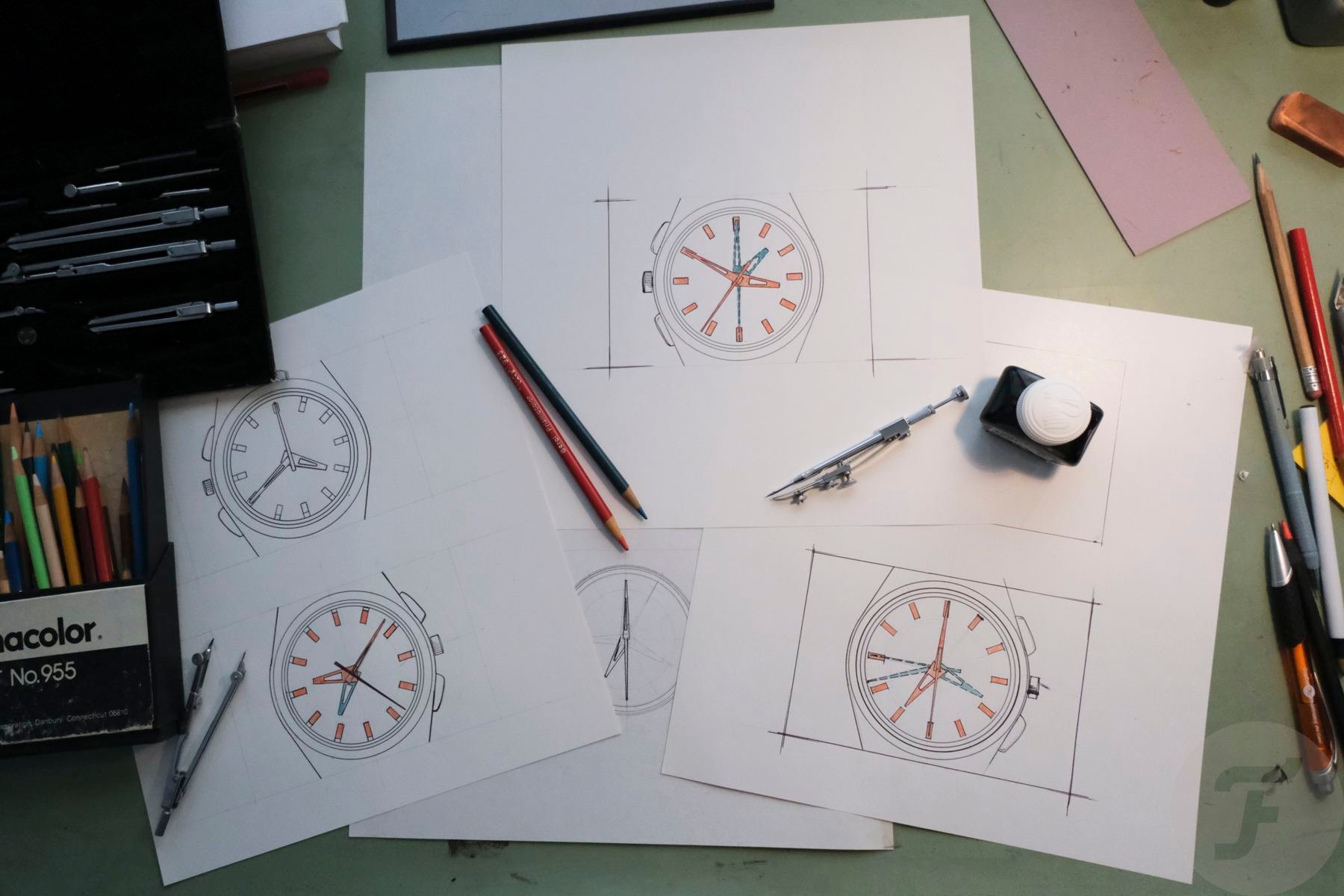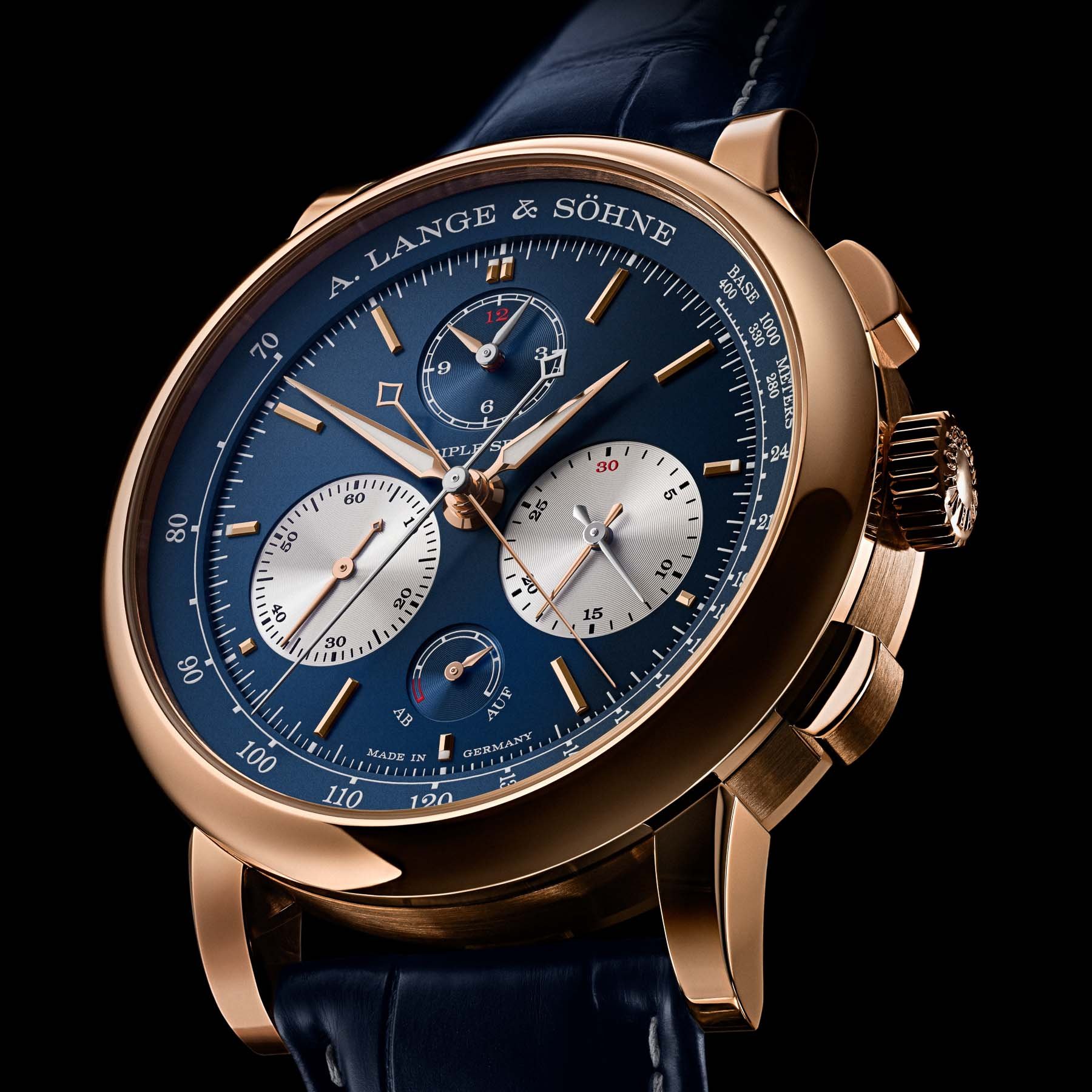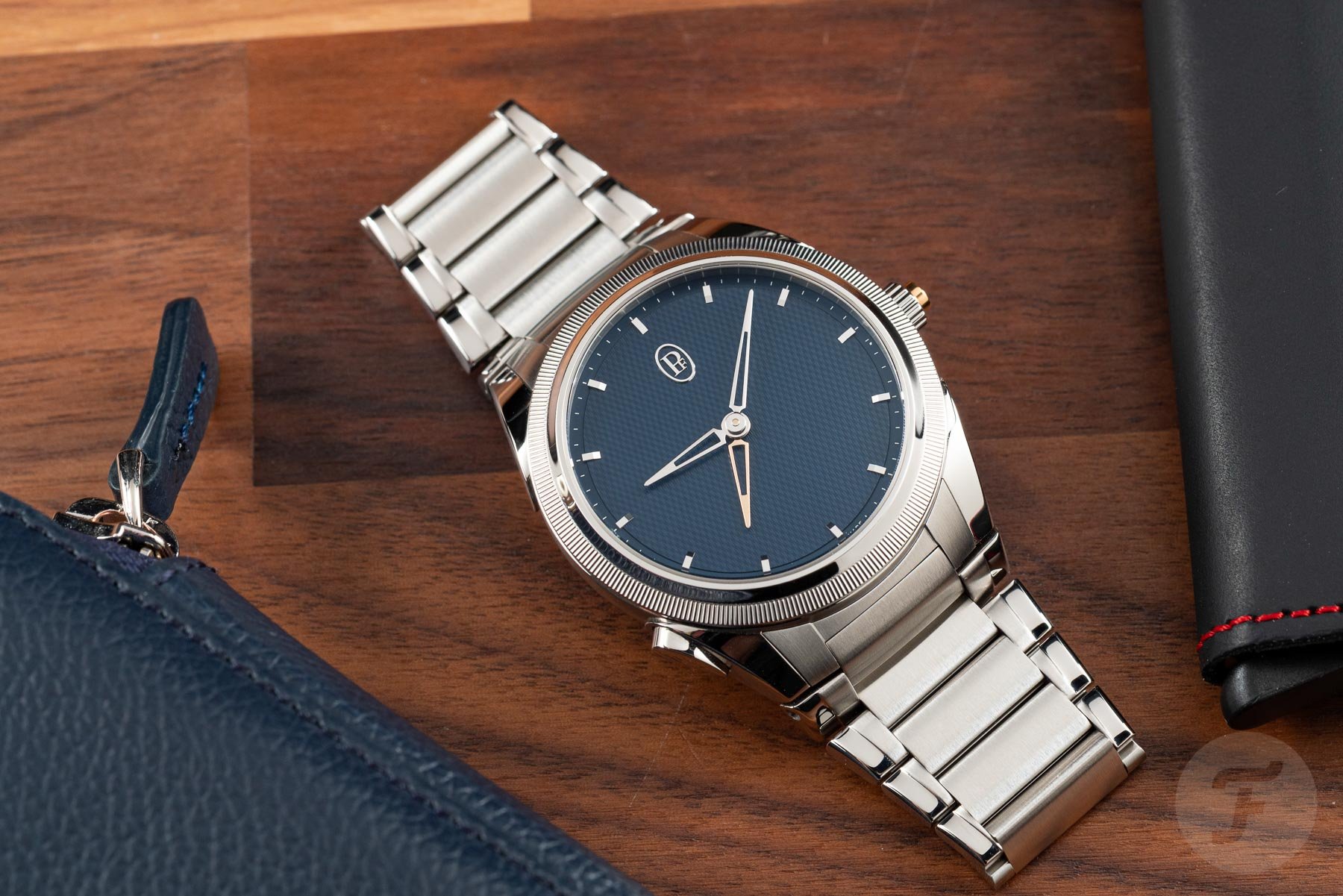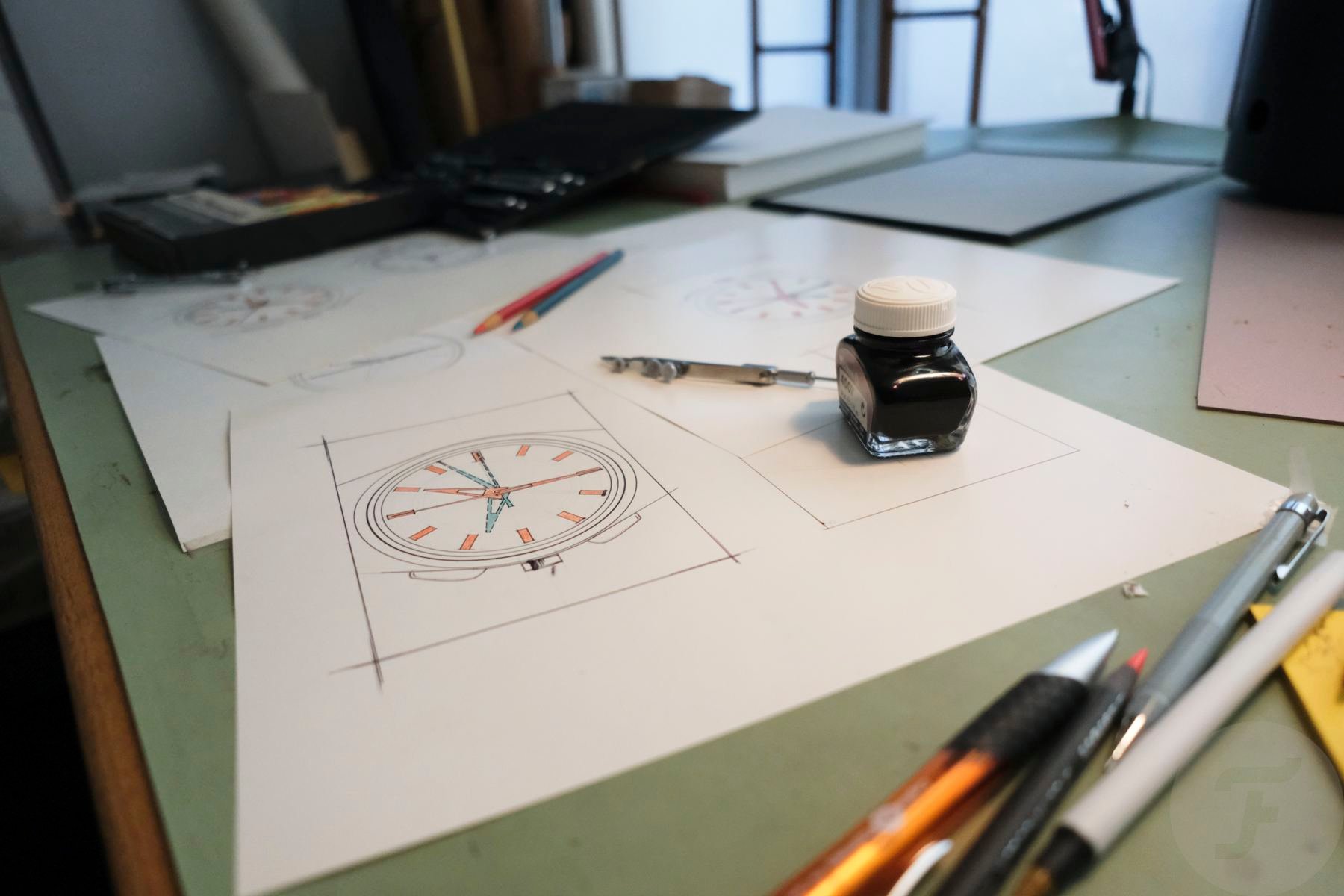A Case For Future Watches: The Doubled-Hand Chronograph
The three-handed watch is a simple standard of telling time. The addition of hands marks the inclusion of additional complications. A GMT hand tracks another timezone. Chronograph hands and sub-dials measure elapsed seconds, minutes, and hours. These extra hands and relevant complications are tacked onto the original concept and mechanism of simple time tracking. They are task-specific, and their functions are quickly recognized depending on their orientation. But a radical approach to adding three extra hands to the simple time-only watch could open the door to multiplied functionality and blur the lines on what task a watch’s extra hands are there to do. I’m talking about a doubled-handed chronograph. It doesn’t exist yet, but it should.
This is the third and final installment of the “A Case For Future Watches” series. This last article features the concept most near and dear to my heart. I’ve been sitting on it for over three years now. It’s the reason I eventually got into writing about watches. Those of you that have followed my work may have picked up on a certain idealism present in my writing. My articles have touched on concepts ranging from the ideal watch collection size to different brands’ implementation of sustainability into their practices. I often refer to particular watches’ designs in terms of how “clean” or “elegant” they are. You could read that as how close they get to the platonic ideal of the simple wristwatch… if ever there were one.
Idealism realized
Now I’m finally writing the article about the watch concept that started it all. As the apex entry so far in my journey of watch writing, it’s also easily the most idealistic of anything I’ve written so far. That’s not to say that the watch is unattainable. If I’ve learned anything in the last year, it’s that what can be achieved in watchmaking when someone or a group of someones puts their minds and hearts to it is awe-inspiring. I have complete faith that if anyone were skilled and dedicated enough, this watch could be made into a reality. Indeed, it is my hope that — perhaps with help from this article — one day, it will.
What is perhaps naively idealistic about this watch is the seemingly simple application of additional hands to unlock a whole host of functionality. The fact that the functions defy distinct separation from each other may irk more people than it pleases. The watch-enthusiast community is a fickle one, and I think many are content with gradually modernized iterations of anachronistic and even archaic designs. I crave novelty and progress. I am drawn to areas of horology and the watch industry where I see real introspection and development occurring. For something so involved with time, a constant drive towards the future and what is possible is what I expect of watchmaking as a craft.
The Doubled-Hand Chronograph
So now we arrive at the watch — “The Watch” as it resides in my mind. I think it’s initially best explained through a walkthrough of operating it and what one is seeing.
What one sees on their wrist is a seemingly simple watch. Three hands — hour, minute, and second — track the time. On the right side, however, on either side of the crown are two pushers that would be at home on any chronograph. One presses the top pusher — the start/stop pusher — at 3:41:45, let’s say. As one would expect, this “starts” the chronograph. In actuality, what it does is stop a set of three hands identical in every way except color to the hour, minute, and second hands that are visible. This extra set of hands has been nestled under the visible three hands — rattrapante style — until the chronograph is started.
This lower set of hands now stops and stays at 3:41:45. The effect of “starting” the chronograph is immediately apparent with the rattrapante second hand, as seconds move the swiftest across a dial. The upper hands continue moving, as any regular watch hands should. Time passes. As the lower minute and hour hands peek further and further out from beneath their counterparts that are leaving them behind, we can see elapsed time from that moment captured, 3:41:45.
Recording the elapsed time
Let’s “stop” the chronograph at 7:00:30. In actuality, the lower set of hands begins moving again from their place at 3:41:45, keeping perfect distance from the upper hands. One can now note the elapsed time by looking at the difference between each pair of hands, starting with the hour. A little more than three hour marks stand between the upper and lower hour hands. Always rounding down to the unit, one knows that three hours have passed. A little more than 18 minutes stand between the minute hands, giving us 18 minutes. And 45 seconds are between the upper and lower second hands. The total time elapsed is 3 hours, 18 minutes, and 45 seconds, or 3:18:45. When one presses the lower pusher, the lower hands snap back to their place nestled underneath the upper set of hands, hiding them until their next use.
Elegant limitations
I concede this is not the easiest way to read elapsed time. Separate sub-dials and hands that stop to mark the end of an event are easier to read quickly. Here, we sacrifice utility for beauty. Perhaps a function of “stopping” the chronograph via the upper pusher could be momentarily freezing all hands while the presser is depressed, allowing one to better mark the elapsed time. They would then snap to the right position upon release.
There would be a bit of a learning curve in being able to see the difference between the sets of hands. Also, one must remember that the upper hands are always “ahead” of the lower hands, preventing one from reading the wrong side of the difference between two hands.
Utility expanded
Perhaps utility isn’t so forsaken, though. This orientation of a chronograph gives us essentially two elapsed time approaches in one. As the chronograph is integrated into real-time and “starting” it essentially captures a moment on the watch face, the functionality of a diver’s bezel is present as well.
Of course, it won’t pass ISO standards for dive bezels, though I doubt a watch like this in the metal would ever receive more than a 10-bar water-resistance rating. But many of us wear dive watches that never see the water and still use the bezels regularly. A chronograph that allows one to not only measure time but to easily and visually count up from a specific moment in time essentially combines two “complications” (if we regard the dive bezel as such) into one.
The 12-hour GMT
I was extremely pleased when I first saw Parmigiani’s Tonda PF GMT Rattrapante. It was like my dreams were beginning to be answered. It certainly indicates a step in the direction of making the fully rattrapante watch a reality.
The same design that Parmigiani uses would be present in the Doubled-Hand Chronograph as well. With the chronograph reset so that only the upper hands are visible, one would pull the crown out one position to set the lower hour hand in one-hour increments. As both sets of hands were already in motion, the lower hour hand would just continue on from whatever hour it was set to. This would allow for one to track a second timezone, though the wearer would have to remember whether it was AM or PM in the other zone.
The chronograph would still be functional to a limited degree. One would be able to measure up to an hour with the rattrapante minute and second hands. The hour hand would stop in time with the starting of the chronograph as well, but its offset would make measuring elapsed hours difficult. Stopping and resetting the chronograph would snap the hands back to their original places, which would be the GMT position for the hour hand.
We now have distilled three complications into only an additional three hands and a couple of chronograph pushers. A chronograph, diver’s bezel, and GMT in a traditional application in one watch would result in an extra hand and a bezel that isn’t present here, and it would be a much busier watch design-wise.
Get fancy with an alarm
This final complication pushes us firmly into Haute Horology if we weren’t there already. The addition of a chime within the watch would allow for the inclusion of an alarm function.
From the fully reset position with all lower hands nestled underneath their upper counterparts, one would “start” the chronograph, again, stopping the lower set of hands. Like waiting for the seconds hand to reach 12 o’clock on a traditional watch to pull the crown out to set the time, one might do the same and wait for the seconds hand to reach the top before stopping the lower set.
Four complications/features (five if we count basic time) distill down to a total of six hands, two pushers, and a crown.
Pull the crown out to the second position. This will allow the user to set the lower set of hands in isolation from the upper hands. One would then set the lower hands to some time in the future, like 7:30 the next morning. Push the crown in and leave the chronograph-turned-alarm running, with the lower hands stopped at 7:30. When the upper hands finally overlap the lower hands at 7:30, a trigger will start the chime. The chronograph/alarm function automatically stops and the lower hands continue on their journey, hidden again underneath the upper hands.
The alarm chime would need a dedicated mainspring, perhaps wound in the opposite direction that the crown winds the primary mainspring in the zero position.
Four complications/features (five if we count basic time) distill down to a total of six hands, two pushers, and a crown. When not in use, the watch would resemble a simple three-hander with out-of-place chronograph pushers on its side. Pull the crown out to the third position and set the time, lower hands still locked beneath the upper, and enjoy it in its simplest form.
A jack of all trades is a master of none…
This watch, the Doubled-Hand Chronograph, does quite a few things with very little. Without each complication isolated from the other, compromises must be made. The use of the 12-hour GMT prevents the use of the full chronograph or alarm (or requires some mental math to account for the offset hour hand). The alarm prevents the use of the chronograph. The chronograph in this orientation is admittedly harder to read than a standalone chronograph with dedicated sub-dials.
…but oftentimes better than a master of one.
However, what is gained is something greater than the sum of the parts. The grand complications that come from the finest watchmaking houses are brilliant works of engineering, art, and horology. But they are also incredibly complicated, visually speaking.
With the addition of the second set of three central hands, this watch achieves the most useful complications we use today in an orientation that would resemble nothing but the most elegant time-only dress watch at first glance. And sure, there are limitations in using the complications simultaneously, but when was the last time you used more than one complication at a time? Many of us own G-Shocks, the veritable “grand complications” of the digital arena. I can’t remember the last time I had a chronograph running and referenced another timezone. For an alarm that can only be set as far as 12 hours into the future, I doubt one would need the use of a chronograph after setting an alarm right before going to bed.
Impossible? Improbable
Practicality isn’t really the issue anyway. At a certain level of complication, after a certain price point, practicality is a moot point. For how simple it might appear at first, what I’m proposing is quite complicated. Even the grandest complications have at most four hands originating from the central point, usually as a split-time chronograph. I have yet to see a watch have more than four hands emerge from one place on the dial.
What would need to happen for six hands to emerge from a single point? I start trying to imagine the combination of sleeves and gears that must fit at the center of the caliber and am left with a headache. Perhaps it’s easier to conceptualize for someone with training. Perhaps I’m underestimating the headache.
Whether it’s possible or not to build doesn’t seem to be quite the correct question. I think the real question is: would it be wearable? The simplicity of the design is pointless if the complex mechanics to support it require a watch case that’s +20mm thick. One thing is for certain: if it is ever going to be made, it’ll definitely need a better name.
Precedent for complication
But I have hope. A. Lange & Söhne makes the Triple Split, the world’s first chronograph to allow for multi-hour comparative time measurements. It features three rattrapante hands for not only split seconds but also split hours and minutes. However, only the hands for elapsed seconds originate from the center. The hand pairs for the elapsed hours and minutes sit in their respective sub-dials. That watch is only 43mm in diameter and 15.6mm thick. It’s still big, but it’s not unwearable.
My exit watch
It’s promising that various design conversations are inching toward what I consider the ultimate goal. Parmigiani with its GMT Rattrapante is approaching one aspect. Lange’s Triple Split is engaging another. I don’t care who makes the Doubled-Hand Chronograph watch a reality. I just want to see it made.
A few years ago, when I first dreamt up the idea, I was so certain of its design, possibility, and appeal that I sent out a few letters regarding the design to a couple of watch companies. It was extremely naive and foolhardy on my part. I was fortunate enough to have one company respond quite respectfully that they do not accept any outside ideas for watch designs, but thanked me for my interest and wished me luck. It was a very welcome and polite dose of reality. No one else responded. Cold calling on watch companies to make one of the more radical watches the world has seen is not the way to get something done.
A long way come, a long way to go
The luck that company wished me apparently did me some good. I dove deeper into the watch world. I now have a job writing about my interest. Better yet, after over a year of honing my writing skills and learning more about the watch industry as a whole, I feel in a better position than ever to present this watch to the world. No more letters hidden away in envelopes and sent to single recipients. I have the opportunity to write this article and send it out to the entire watch industry. Call this an open letter to the world.
Horologically speaking, nothing would make me happier than this watch becoming a tangible reality. It being mechanical would, of course, be preferable, but the only way I’d be able to own one is if it were quartz. Even then, who knows how affordable it would be with how complicated the caliber might be? But I’m not picky. And I’m not looking for anything more than a watch; I have no patents to file. I wouldn’t even know where to start. To see this watch and hopefully see it bring joy and wonder to other watch enthusiasts is all I want. If in the future, someone says, “You know, I think there was an article years ago that introduced the concept for this,” well, I don’t see how it could get any better.
You can find more of me on Instagram: @WatchingThomas
Conceptual sketches are by Albert Y. Wong. You can find his art on his official website.

